HighlightsHighlights of 8 days Classic Srilanka Tour
The Sri Lanka 8 Days Classic tour consists of the tourist attractions in the cultural triangle, the central hills, and the southern province of Sri Lanka during this tour. The guests further participate in activities like wildlife safaris, rock climbing, waterfall watching, boat riding, swimming, and surfing within this tour.
The Dambulla cave temple is a site held sacred by the Buddhists and is situated 148 km to the north of the capital city, Colombo within the cultural triangle of Sri Lanka. It was declared a world heritage site in 1991 in consideration of its unsurpassed and century-old religious, artistic, and architectural contribution to world culture. It is one of the most prominent cave temples built in the early Anuradhapura era. According to traditional beliefs, the name Dambulla was derived from dame-ulla or spring of the rock and later a combination of the two formed the word Dambulla. The legend accompanies this to the famous spring with never-ending drips of water oozing out from a crack in the ceiling of the massive rock under the shrine. The ancient document of the Dambulla temple, especially the Dambulla patra or the royal grant states that these caves are the creation of King Valagamba who reigned between 77 and 89 B.C. The Dambulla cave temple, which is renowned worldwide, comprises five cave temples close to each other. The murals are living examples of the skills of the family of artists that cover an area of 2,000 sq. ft. Houses are one hundred and sixty-one statues of figures in various postures resembling a mixture of religious and secular sculptures.

The first of the cave temples is known as Deva Raja Vihara or the cave of the divine king. The narrow strips of its floor mainly occupy a 12-meter-long statue of the enlightened one in the Parinibbana posture. The ceilings and the walls of this cave are decorated with murals of the Kenyan style.
The second cave, the Maharaja Vihara is the longest cave in the monastic complex with 60 statues and 2 doors for entrance. The main statue is a standing Buddha with the right hand in “Abhaya” mudra and protected by a dragon arch.
The massive column of rock adjusted 180 meters or 590 ft. out of the forest in Sri Lanka’s central province, Sigiriya became the site of an elaborate city that remains one of the most impressive examples of urban planning in the ancient world. There are three myths behind the construction of the rock fortress. One suggests it to be a deliberately designed military fortress in the conflict between two brothers; King Kashyapa and King Mogallan. Another one says it was built for the l]king and his concubines and the third one suggests, it was meant to be a grand canvas for ancient artists and poets. The story of the ancient Citadel Sigiriya is one of murder, intrigue betrayal that has survived over 16 centuries carved, painted, and built into the rock itself.
 The area around Sirigiya has been inhabited for at least 5,000 years and the evidence of Buddhist monks using the rocky terrains and its many caves for shelter as early as the 3rd century B.C. Many caves or rock outcroppings in the area feature inscriptions denoting them as donations from the three Buddhist sects; Theravada, Mahayana, and Vajrayana. however, the story of Sigiryartress didn’t begin until almost a millennia later when the 5th-century king Kashyapa the first son of King Dhatusena decided he wanted the throne for himself. Dhatusena was an important figure in Sri Lankan history, uniting the country under his rule and driving our Dravidian invaders from India. A kind of savior figure for the people, dhatusena’s uncle disguised him in a Buddhist order as a child to hide him from the Dravidians as he started a resistance movement once he grew up. He then revitalized the country by building irrigation tanks and canals and improving the agricultural output. Data suggests that he also had a lot of wives and concubines with whom had a lot of children. King Kashyapa was the oldest but he was not heir to the throne because his mother wasn’t an official royal consort.
The area around Sirigiya has been inhabited for at least 5,000 years and the evidence of Buddhist monks using the rocky terrains and its many caves for shelter as early as the 3rd century B.C. Many caves or rock outcroppings in the area feature inscriptions denoting them as donations from the three Buddhist sects; Theravada, Mahayana, and Vajrayana. however, the story of Sigiryartress didn’t begin until almost a millennia later when the 5th-century king Kashyapa the first son of King Dhatusena decided he wanted the throne for himself. Dhatusena was an important figure in Sri Lankan history, uniting the country under his rule and driving our Dravidian invaders from India. A kind of savior figure for the people, dhatusena’s uncle disguised him in a Buddhist order as a child to hide him from the Dravidians as he started a resistance movement once he grew up. He then revitalized the country by building irrigation tanks and canals and improving the agricultural output. Data suggests that he also had a lot of wives and concubines with whom had a lot of children. King Kashyapa was the oldest but he was not heir to the throne because his mother wasn’t an official royal consort.
Sigirya with its unobstructed view of the surrounding plains and forest seemed to the the perfect place. Kashyapa did more than just hide away atop Sigiriya instead he got to planning an elaborate city that was more than just practical but luxurious as well. It also contained impressive technological features for the time including a man-made reservoir on the south side of the rock and hydraulic systems that powered fountains that still work to this day.
Situated in the North-central province of Sri Lanka, Minneriya National Park is closest to the main cities; Habarana and Polonnaruwa. It was a wildlife sanctuary in 1938 but on 2nd August 1997, it was designated as a national park. Minneriya is protected to protect the drainage basin of the Minneriya tank and the flora and fauna.

The tank bears historical importance being built as far back as the 3rd century C.E. by king mahasen. While Minneriya forms one of the important bird areas of Srilanka, the tourists are in for a majestic spectacle as the largest gathering of elephants in Asia can be witnessed within the parks. The dry season is especially during May to September. In contrast, the wet season lasts from October to January. The habitats of Minneriya are of various kinds including low-canopy montane forests, intermediate high-canopy secondary forests, scrublands, abandoned chena lands, grasslands, rocky outcrops, and wetlands. The water level of the tank recedes and the evening visitors are in for a treat built as the greatest show in Asia. from the twilight jungle shadows, elephants start emerging and congregating around the main body of water which is the Minneriya tank. The purpose of the accumulation of these pachyderms billed as the largest land mammals is to socialize, play bathe, drink, and eat. The convergence of these magnificent creatures also results in animal procreation.
Temple of the Tooth Relic
After the passing of the Great Gautam Buddha, the tooth relic was preserved in Kaliya, India, and then smuggled to the island of Sri Lanka. They landed on the island and handed it to the King of Anuradhapura. King Krithi Sri Meghavanna (301-328 C.E) subsequently enshrined the tooth relic at the Megagiri Viharia, today referred to as "Isurumuniya". The safeguarding of the tooth relic became the responsibility of the monarch of the time and custodianship symbolized the right to rule the country. Successive monarchs and kingdoms thereafter kept the tooth relic close to their royal residencies or royal complexes.
 The day the tooth relic was housed in the city of Kandy in Sri Lanka at the Sridaladar Maligawa or temple of the tooth, the chief prelate of the Malwater and Asgiriya chapters have always played an important role in the operation, exposition, and matters related to the temple of Tooth or the sridala maligawa. The two Mahanayakas or the chief prelate of this monastic establishment belong to a major sect known as "Siyam Nikaya". The Sridala Maligawa complex includes the entrance octagonal structure, golden canopy, audience hall, museum of the temple, the royal palace, and the National Museum of Kandy. The complex is sandwiched between the Kalaya Sanctuary and Kandy Lake.
The day the tooth relic was housed in the city of Kandy in Sri Lanka at the Sridaladar Maligawa or temple of the tooth, the chief prelate of the Malwater and Asgiriya chapters have always played an important role in the operation, exposition, and matters related to the temple of Tooth or the sridala maligawa. The two Mahanayakas or the chief prelate of this monastic establishment belong to a major sect known as "Siyam Nikaya". The Sridala Maligawa complex includes the entrance octagonal structure, golden canopy, audience hall, museum of the temple, the royal palace, and the National Museum of Kandy. The complex is sandwiched between the Kalaya Sanctuary and Kandy Lake.
Peradeniya Botanical Garden
Peradeniya Botanical Garden is a must-visit destination in Sri Lanka. It is listed among the 10 great botanical gardens around the world. The University of Peradeniya, the most beautiful and coolest university in Srilanka spans almost 70 hectares of land. The clean atmosphere and the large number of beautiful green trees and plants full of colorful flowers make it a paradise on Earth. You get gorgeous views of the sky, forests, and Mahaweli River.

The highlight is the spectacular orchid collection and the artistic arrangement of the variety of orchids. An entrance with palm trees gives a perfect look to Peradeniya Gardens and it is a mighty avenue of palm trees. The gardens display over 4,000 different species of plants including; medicinal plants, flowers, orchids, spices, gymnosperms, and palm trees. It is a world of flowers and a perfect sight to the eye.
Srilanka has 21 national parks and locations. However, undoubtedly one of the most popular locations is the Yala National Park. Yala is a strict nature conservation area and is segregated into five blocks. The park has an area of nearly 110 thousand hectares that consists of forests, scrubs, grasslands, tanks, and lagoons. Ironically this area, now a strict nature's treasure was used as a hunting site during British rule. Yala is 270 kilometers from Colombo and a southern expressway is a logical route to access it. Once you get to Tissamahrama and head toward Kirinda, the block one entrance is just 12 kilometers away. There is a variety of accommodations available outside the park and if you incline towards creature comfort or pampering, there are a few hotels just minutes away from the block one entrance also referred to as Palatupana entrance. These hotels have the privilege of fast entrance access as well as some of the beach frontage available at the periphery of Yala. To the north, the park is Katharangama, and to the east, Panama and Kumana National Park. To the south, the sea, and to the west krinda and Tissamaharama. There are two other entrances Katagamuwa and the third Galge. The Palatupana entrance to block one is the popular entry point and sees an early morning scramble at the ticket office to gain access through the park gates.

Topographically, the area is a flat and mildly undulating plain where the temperature varies from 26 and 32 degrees Celsius. Whatever your passion; elephants, birdlife, or trying to get a glimpse or meeting Panthera Pardus Kotiya, the leopard endemic to Srilanka. The park is sure to please and deliver. The increasing number of visitors every year can take its toll on the infrastructure of the park as well as the animals. Be sure to follow park etiquette and blend in rather than stand out. We are in their habitat so patience along with minimum noise is a good way to ensure great sightings. The park is home to 44 species of mammals and 215 species of birds. There is also a diverse range of reptiles, amphibians, fish, and invertebrates within the park boundary. Yala’s diverse ecosystems ranging from moist monsoon forests to fresh water and marine wetlands have made it one of 70 important bird areas. The most famous occupants that inhabit the park are the majestic elephants, sloth bears, jackals, spotted deer, peacocks, and crocodiles. Yala is also one of the best locations in the world to observe the leopard. The park is said to have the highest density of leopard population per kilometer in the world. The leopard roaming the periphery often uses carp from cattle herds just outside the park for extra or be it easy sustenance.
Sri Lanka's tourism industry has boomed in recent years, captivating travelers with its stunning landscapes, rich culture, and exciting adventures. Though marked by past ethnic strife, Sri Lanka has united to showcase its vibrant culture, rich history, and thriving economy. The history of colonial occupation has left an unbudging finger mark on Sri Lanka's existence. The country’s contentment has shown a shred of remarkable evidence that Sri Lanka is a secure landing place for solo travelers, family holidays, honeymoons, or adventurous tourism. We at Abound Holidays, have finely curated Sri Lanka tour packages for every traveler’s convenient trip to the “Land of Smiles”.

This package tour to Sri Lanka will take you on a journey to the country also known as a teardrop of India, surrounded by a broad coastal plain. Srilanka is home to one the highest peaks in the world Mt.Pidurutalagala or Mount Pedro standing 8,200 ft tall in the north-east part of the town of Nuwara Eliya but is conveniently visible even from the central region of the country. Srilanka has plenty of exciting trips in store. Kandy City Tour Sri Lanka will make the trip memorable. You will be taken to some of the highlighted tourist destinations in the 8-day classic Sri Lanka tour.
Talking about the climate, Sri Lanka is mostly hot and humid throughout the year but the highlands are comparatively cooler. The tropical and exotic climate of Sri Lanka is influenced by two monsoon seasons. Summer monsoon lasts from mid-May to October when winds from the southwest bring rain from the Indian Ocean to the southern and western parts of the island. In contrast, the winter monsoon lasts from December to March bringing rain from the Bay of Bengal to the northern and eastern regions. The best time to visit Sri Lanka for 8 days is between the time of December and April where you can catch a sight of the green pastures, golden sand beaches, the rocky hills, and the reflection of the sky on the waters. It reminds you of your connection to nature, isn't it?
Abound Holidays has curated an 8-day classic Sri Lanka tour itinerary that covers almost everything you look for in a complete tour package.


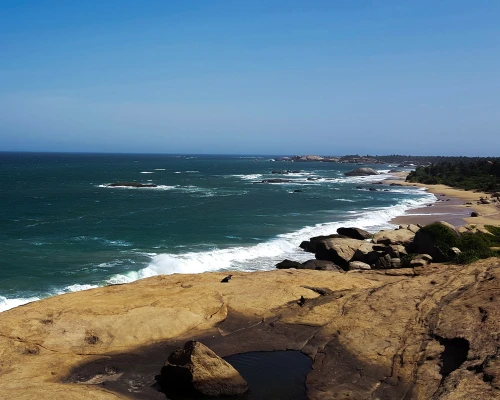
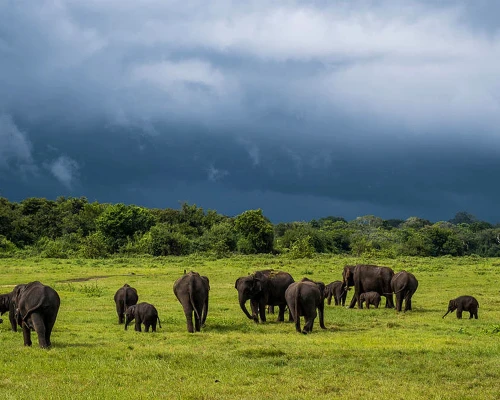
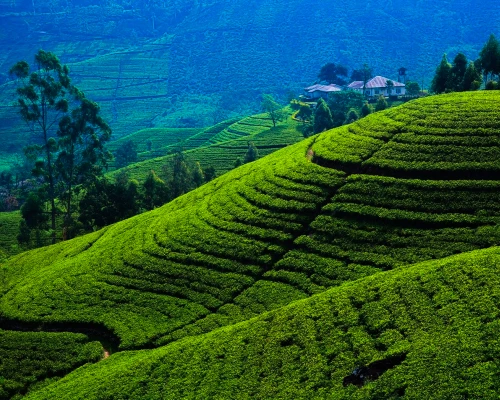
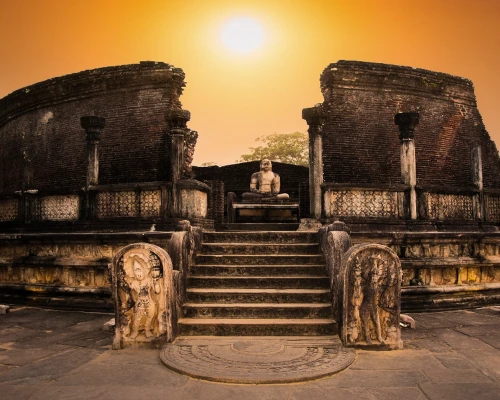
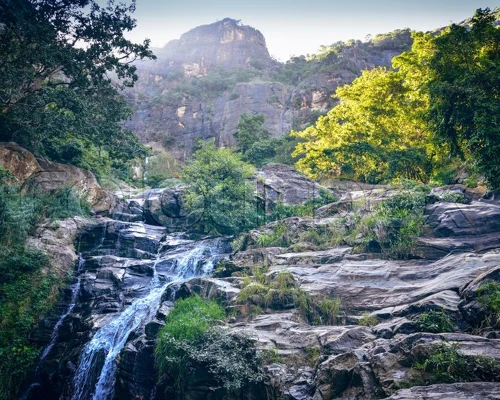


 The area around Sirigiya has been inhabited for at least 5,000 years and the evidence of Buddhist monks using the rocky terrains and its many caves for shelter as early as the 3rd century B.C. Many caves or rock outcroppings in the area feature inscriptions denoting them as donations from the three Buddhist sects; Theravada, Mahayana, and Vajrayana. however, the story of Sigiryartress didn’t begin until almost a millennia later when the 5th-century king Kashyapa the first son of King Dhatusena decided he wanted the throne for himself. Dhatusena was an important figure in Sri Lankan history, uniting the country under his rule and driving our Dravidian invaders from India. A kind of savior figure for the people, dhatusena’s uncle disguised him in a Buddhist order as a child to hide him from the Dravidians as he started a resistance movement once he grew up. He then revitalized the country by building irrigation tanks and canals and improving the agricultural output. Data suggests that he also had a lot of wives and concubines with whom had a lot of children. King Kashyapa was the oldest but he was not heir to the throne because his mother wasn’t an official royal consort.
The area around Sirigiya has been inhabited for at least 5,000 years and the evidence of Buddhist monks using the rocky terrains and its many caves for shelter as early as the 3rd century B.C. Many caves or rock outcroppings in the area feature inscriptions denoting them as donations from the three Buddhist sects; Theravada, Mahayana, and Vajrayana. however, the story of Sigiryartress didn’t begin until almost a millennia later when the 5th-century king Kashyapa the first son of King Dhatusena decided he wanted the throne for himself. Dhatusena was an important figure in Sri Lankan history, uniting the country under his rule and driving our Dravidian invaders from India. A kind of savior figure for the people, dhatusena’s uncle disguised him in a Buddhist order as a child to hide him from the Dravidians as he started a resistance movement once he grew up. He then revitalized the country by building irrigation tanks and canals and improving the agricultural output. Data suggests that he also had a lot of wives and concubines with whom had a lot of children. King Kashyapa was the oldest but he was not heir to the throne because his mother wasn’t an official royal consort. 
 The day the tooth relic was housed in the city of Kandy in Sri Lanka at the Sridaladar Maligawa or temple of the tooth, the chief prelate of the Malwater and Asgiriya chapters have always played an important role in the operation, exposition, and matters related to the temple of Tooth or the sridala maligawa. The two Mahanayakas or the chief prelate of this monastic establishment belong to a major sect known as "Siyam Nikaya". The Sridala Maligawa complex includes the entrance octagonal structure, golden canopy, audience hall, museum of the temple, the royal palace, and the National Museum of Kandy. The complex is sandwiched between the Kalaya Sanctuary and Kandy Lake.
The day the tooth relic was housed in the city of Kandy in Sri Lanka at the Sridaladar Maligawa or temple of the tooth, the chief prelate of the Malwater and Asgiriya chapters have always played an important role in the operation, exposition, and matters related to the temple of Tooth or the sridala maligawa. The two Mahanayakas or the chief prelate of this monastic establishment belong to a major sect known as "Siyam Nikaya". The Sridala Maligawa complex includes the entrance octagonal structure, golden canopy, audience hall, museum of the temple, the royal palace, and the National Museum of Kandy. The complex is sandwiched between the Kalaya Sanctuary and Kandy Lake. 

